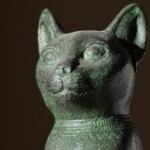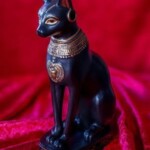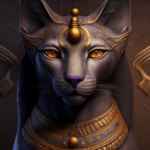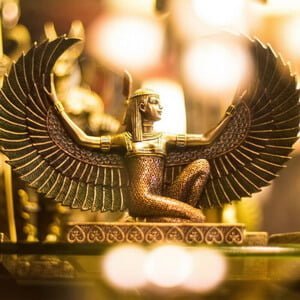Unraveling the Mysteries of the Cat Goddess
Exploring the Role of Bastet in Ancient Egyptian Culture
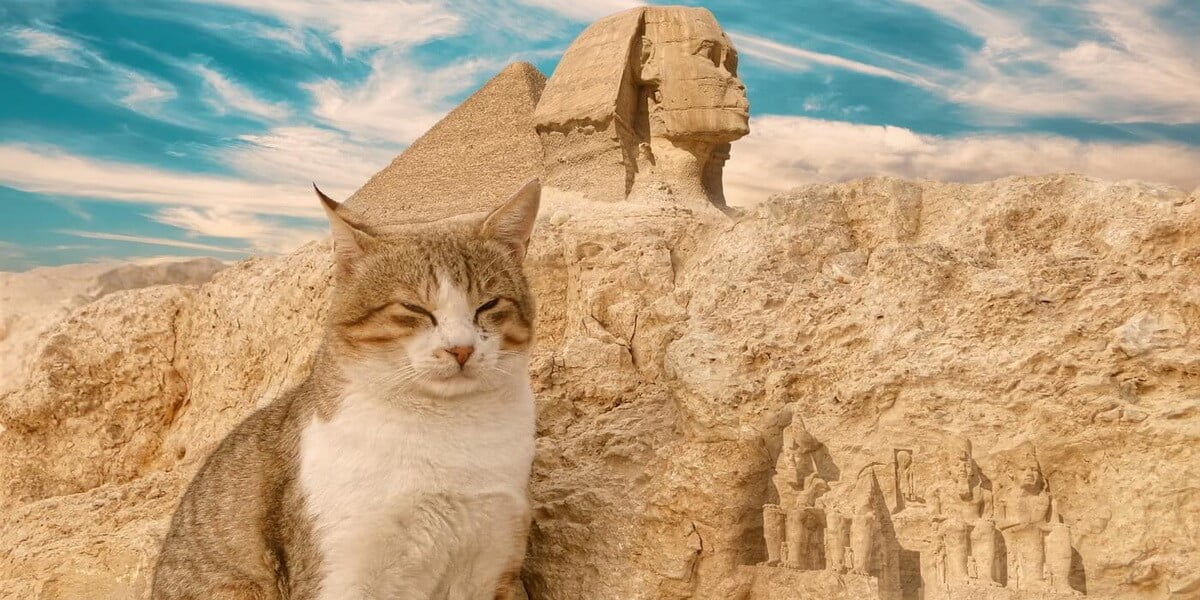
Bastet
The Cat Goddess of Ancient Egypt
Cats have been beloved pets for centuries, but did you know that in ancient Egyptian mythology, they were also considered sacred creatures? The Egyptians even worshipped a cat goddess named Bastet, who was highly revered for her protective and nurturing qualities. In this article, we will explore the fascinating world of Bastet, the most well-known cat goddess in ancient Egypt, and learn about her significance in their culture.
Bastet was the goddess of fertility, music, joy, and the home. Her depiction was that of a woman with the head of a domesticated cat or a lioness. She was often depicted holding a sistrum, an ancient musical instrument used in religious ceremonies. In ancient Egypt, Bastet was seen as a powerful and benevolent goddess who could protect her followers from harm.
Why was Bastet so important?
Cats were highly valued in ancient Egypt, as they were believed to have divine powers and protect their owners from evil spirits. Bastet, as the goddess of cats, was responsible for overseeing the well-being of both felines and humans. She was also believed to have protected the home, ensuring that it was a safe and happy place.
In addition to her protective qualities, Bastet was also associated with fertility and childbirth. Her role in promoting fertility made her a popular deity among women, who would often pray to her for help with conception.
Bastet in modern times
Although the worship of Bastet declined after the Roman conquest of Egypt, her legacy has endured. Today, Bastet remains a popular symbol of ancient Egyptian mythology and is often depicted in popular culture as a powerful and regal figure. Bastet’s image can be seen in everything from jewelry and clothing to home décor and video games.
Bastet, the cat goddess of ancient Egypt, was a revered deity who played an important role in their culture. Her significance as a protector of homes, cats, and people made her a popular deity, and her legacy has endured to this day. Whether you are a cat lover or simply interested in ancient Egyptian mythology, Bastet’s story is one that is sure to capture your imagination.
Who is Bastet?
Bastet, the goddess of fertility, music, joy, and the home was one of the most well-known deities in ancient Egyptian mythology. She was depicted with the head of a domesticated cat or a lioness and was often associated with cats, which were considered sacred animals in ancient Egypt. In this section, we will take a closer look at who Bastet was, her representation as a cat goddess, and how her depiction evolved over time.
Bastet’s Role in Ancient Egyptian Mythology
Bastet was considered a powerful goddess in ancient Egyptian mythology, responsible for protecting both humans and animals. She was believed to have protected homes and was also associated with fertility and childbirth. Her role as the goddess of music made her a popular figure in religious ceremonies and festivals.
Bastet’s Representation as a Cat Goddess
Bastet’s depiction as a cat goddess was significant in ancient Egypt, where cats were considered sacred animals. As the goddess of cats, Bastet was responsible for ensuring their well-being and protection. She was often depicted holding a sistrum, an ancient musical instrument used in religious ceremonies. Her association with cats also made her a symbol of fertility and childbirth.
Why Cats Were Important in Ancient Egypt
Cats were highly valued in ancient Egypt because of their ability to hunt and control rodents, which were a significant problem in the region. As cats became more domesticated, they also became popular pets, and their importance in ancient Egyptian society grew. Because of their ability to protect grain stores from rats and mice, cats were considered sacred animals, and killing one was considered a serious crime.
Bastet’s Evolution from a Lioness Goddess to a Cat Goddess
Bastet’s depiction evolved over time from a lioness goddess to a cat goddess. In earlier representations, she was depicted with the head of a lioness, symbolizing her fierce and protective qualities. Over time, however, she became more closely associated with domesticated cats, and her image was changed to reflect this. By the 22nd dynasty, she was depicted with the head of a cat and had become the goddess of domesticated cats.
Bastet, the goddess of fertility, music, joy, and the home was an important figure in ancient Egyptian mythology. Her representation as a cat goddess and her association with cats played a significant role in ancient Egyptian culture, and her image evolved over time to reflect this. Whether you are a cat lover or simply interested in ancient Egyptian mythology, Bastet’s story is one that is sure to capture your imagination.
Bastet Statue
Bastet, the goddess of fertility, music, joy, and the home was an important deity in ancient Egyptian mythology. One of the most popular ways of representing her was through statues. In this section, we will discuss the significance of Bastet statues, their uses in ancient Egypt, their different types, and where they can be found today.
The Significance of Bastet Statues
Bastet statues were significant in ancient Egypt because they represented the goddess and her protective qualities. They were believed to have the power to ward off evil spirits and protect homes and their inhabitants. Because of this, many people kept Bastet statues in their homes as a form of protection.
Uses of Bastet Statues in Ancient Egypt
Bastet statues were used for various purposes in ancient Egypt. They were often used in religious ceremonies to honor the goddess and ask for her protection. They were also used as household items and were believed to protect homes from evil spirits. Many people would keep Bastet statues in their homes, often in the form of small figurines.
Different Types of Bastet Statues
Bastet statues were made from various materials, including wood, bronze, and stone. They were often painted or adorned with jewelry to make them more visually appealing. Bastet statues were typically depicted as a cat or lioness, with intricate details such as facial features, headdresses, and jewelry. Some statues were designed to be used as a storage containers, and others were created as a form of art.
Where to Find Bastet Statues Today?
Bastet statues can be found in various museums and private collections around the world. Many museums have extensive collections of ancient Egyptian artifacts, including Bastet statues. Some private collectors have also acquired Bastet statues, which can be viewed in exhibitions or through online galleries.
Bastet statues played an important role in ancient Egyptian culture, representing the goddess and her protective qualities. They were used in religious ceremonies and as household items and were made from various materials and adorned with intricate details. Today, Bastet statues can be found in museums and private collections, providing us with a glimpse into the rich history and culture of ancient Egypt.
Bastet Goddess
Bastet was an important goddess in ancient Egyptian mythology, representing fertility, music, joy, and the home. In this section, we will delve deeper into her role as a goddess, how she was worshiped in ancient Egypt, and the different aspects of her personality.
Bastet’s Role as a Goddess
Bastet was a multifaceted goddess representing various aspects of life, such as nurturing, protection, and fertility. She was often depicted as a cat or lioness, emphasizing her protective qualities. Bastet was also associated with the sun and the moon and was believed to have the power to heal and protect.
Worshiping Bastet in Ancient Egypt
Bastet was worshiped in ancient Egypt through various rituals and ceremonies. She had several temples dedicated to her, including the Temple of Bastet in the city of Bubastis. The temple was a center of worship for the goddess, and it hosted festivals in her honor. During these festivals, people would offer food and drink to the goddess and participate in music and dance performances.
Different Aspects of Bastet’s Personality
Bastet’s personality had various aspects, each representing a different quality. She was often associated with motherhood and nurturing, representing the feminine qualities of protection and care. Her protective qualities were also emphasized, as she was believed to protect homes and their inhabitants from evil spirits. Additionally, she was associated with music and dance, representing joy and celebration.
Bastet was an important goddess in ancient Egyptian mythology, representing various aspects of life and symbolizing protection and care. She was worshiped through various rituals and ceremonies and had several temples dedicated to her. Her multifaceted personality represented different qualities, including nurturing, protection, and joy. The worship of Bastet played a significant role in ancient Egyptian culture, and her legacy continues to inspire and fascinate people around the world today.
Bastet Egyptian Goddess
Bastet is a revered figure in ancient Egyptian culture, and her influence is still evident in modern times. In this section, we will explore her connection to Egyptian culture, how she was represented in art, and the different symbols associated with her.
Bastet’s Connection to Ancient Egyptian Culture
Bastet was an integral part of ancient Egyptian culture, representing fertility, motherhood, and protection. She was a popular goddess, and her temples were important centers of worship throughout Egypt. Bastet’s influence can also be seen in the many statues, paintings, and other artifacts dedicated to her.
Representation of Bastet in Egyptian Art
Bastet was often depicted in Egyptian art, including hieroglyphs and tomb paintings. She was commonly represented as a cat or a lioness, sometimes wearing a headdress with the sun disk or the uraeus serpent. In some depictions, she was shown holding a sistrum, a musical instrument associated with joy and celebration.
Symbols Associated with Bastet
In addition to the sistrum and the sun disk, Bastet was associated with other symbols in Egyptian culture. One of these symbols was the cat, which represented her protective qualities. The scarab beetle was another symbol associated with Bastet, representing rebirth and regeneration.
Bastet was a significant figure in ancient Egyptian culture, representing various aspects of life and embodying qualities such as protection, motherhood, and joy. Her influence can still be seen in modern times, with many people still revering to her as a symbol of feminine power and protection. Through her representation in Egyptian art and the symbols associated with her, Bastet remains an enduring and fascinating figure in the world of mythology.
Bastet Cat
Bastet is closely associated with cats, and her representation as a cat goddess had a significant impact on the way cats were viewed in ancient Egypt. In this section, we will explore the connection between Bastet and cats, the different cat breeds present in ancient Egypt, and how Bastet’s representation influenced their perception.
The connection between Bastet and Cats
Cats were highly regarded in ancient Egypt, and they were believed to possess mystical qualities. Bastet’s representation as a cat goddess reinforced this belief, and cats were viewed as sacred animals. They were often depicted in art, and many households had cats as pets.
Different Cat Breeds in Ancient Egypt
Several different cat breeds were present in ancient Egypt, including the Egyptian Mau, a breed known for its distinctive spots and elegant appearance. The Abyssinian and Siamese species are also thought to have originated in ancient Egypt. These cats were highly prized, and their images can be seen in ancient Egyptian art.
Influence of Bastet’s Representation
Bastet’s representation as a cat goddess had a significant influence on the way cats were perceived in ancient Egypt. As a protector of women and children, Bastet was associated with the nurturing qualities of cats. This reinforced the belief that cats were important companions and protectors. The connection between Bastet and cats also strengthened the idea that cats were sacred animals, and harming them was considered a serious offense.
Bastet’s representation as a cat goddess had a profound influence on the way cats were viewed in ancient Egypt. Cats were highly regarded and often depicted in art, and they were believed to possess mystical qualities. The different breeds of cats present in ancient Egypt, such as the Egyptian Mau, reflect the importance of cats in their society. Through her association with cats, Bastet remains a beloved figure in mythology and continues to inspire fascination and admiration in people today.
Conclusion:
Bastet, the cat goddess of ancient Egyptian mythology, has played a significant role in the culture and history of Egypt. In this article, we have explored the different aspects of Bastet, from her representation as a cat goddess to her evolution over time, as well as her connection to Egyptian culture and the symbols associated with her.
Bastet’s influence on ancient Egyptian culture is undeniable. She was an important deity and was revered by both the common people and the ruling elite. Her worship was accompanied by various religious ceremonies and rituals, and she was believed to have the power to protect and nurture her followers.
Bastet’s legacy has endured over time, and she is still revered by many today. Her representation as a cat goddess has had a significant impact on how cats are viewed in Egyptian culture and beyond. Bastet statues can be found in museums and private collections around the world, and her symbols continue to inspire artists and designers.
As we have seen, Bastet is a fascinating figure with a rich history and cultural significance. By learning more about her, we can gain a deeper understanding of ancient Egyptian mythology and the role of animals in their culture. So, we encourage readers to continue exploring the world of Bastet and the fascinating history of ancient Egypt.
Unlock the secrets of ancient Egyptian mythology with this captivating exploration of Bastet, the revered cat goddess. From her symbolism in art and culture to the worship of the goddess in ancient Egypt, this article delves deep into the fascinating world of one of the most iconic deities in history—a must-read for anyone interested in the history of cats, religion, or ancient civilizations.

